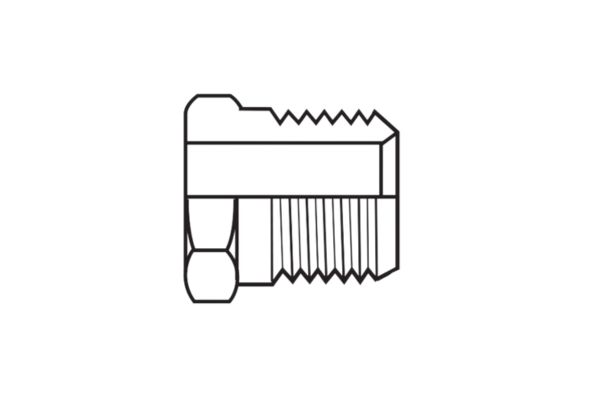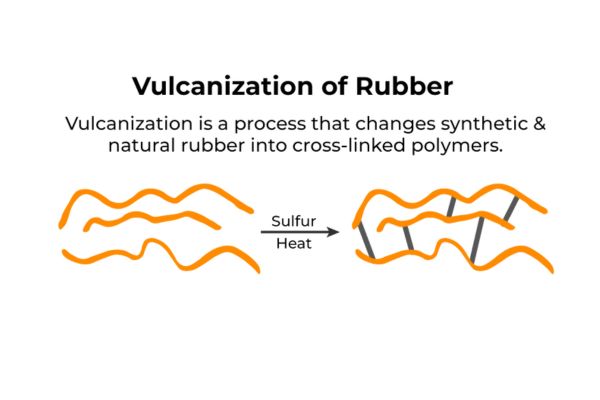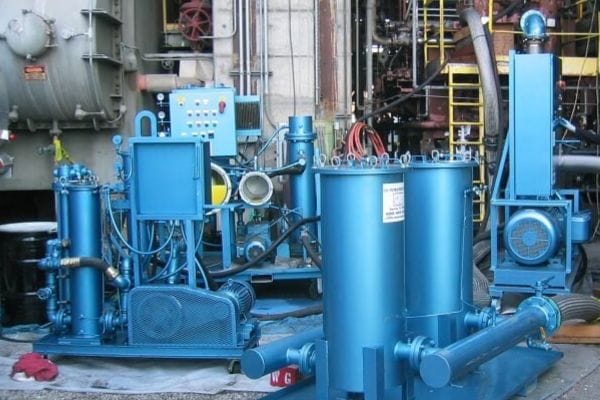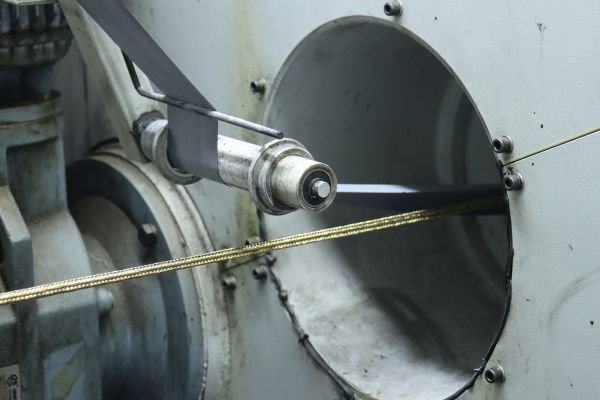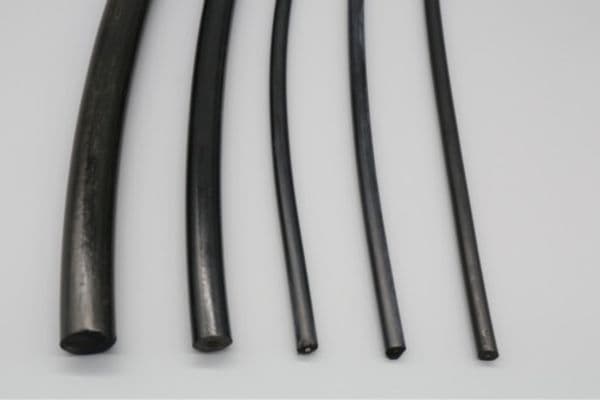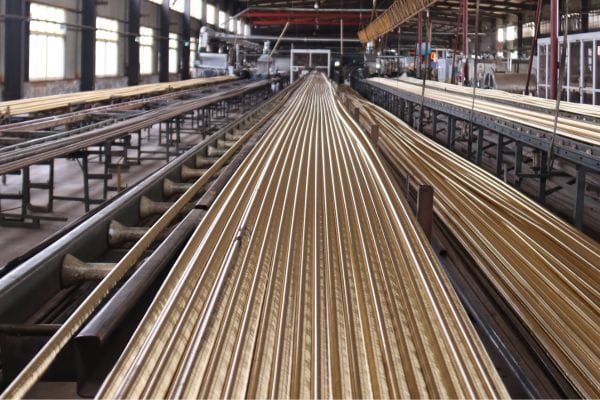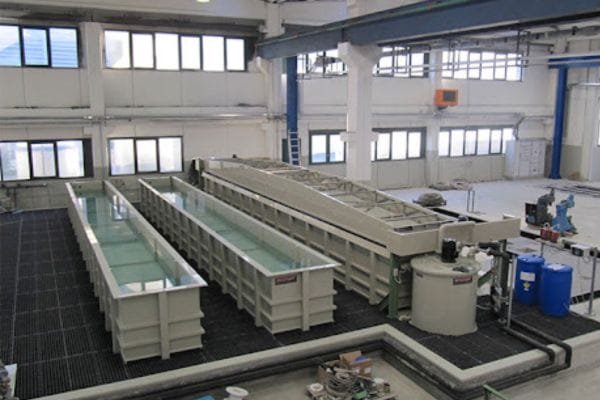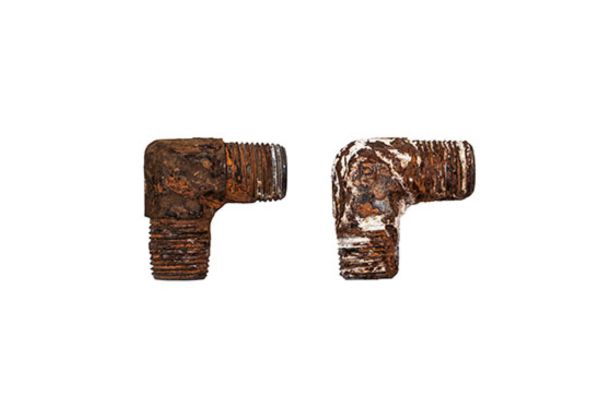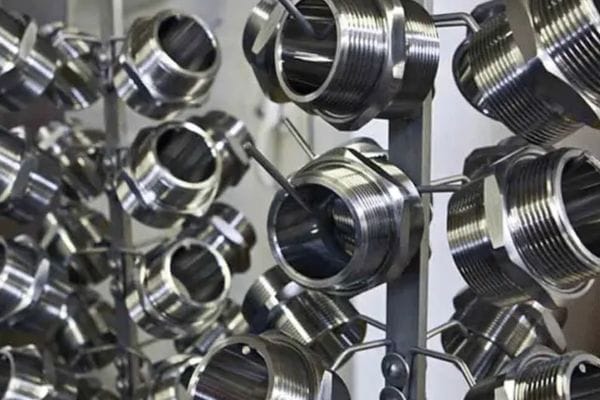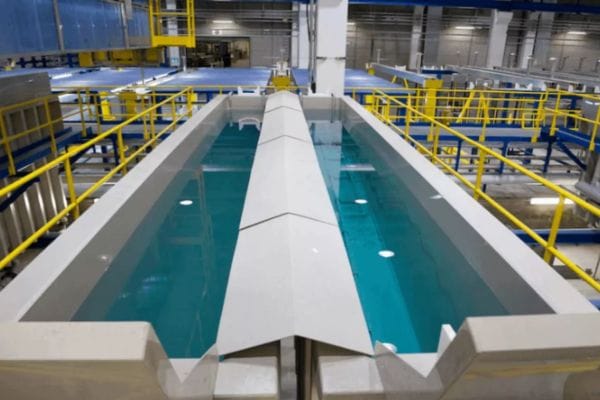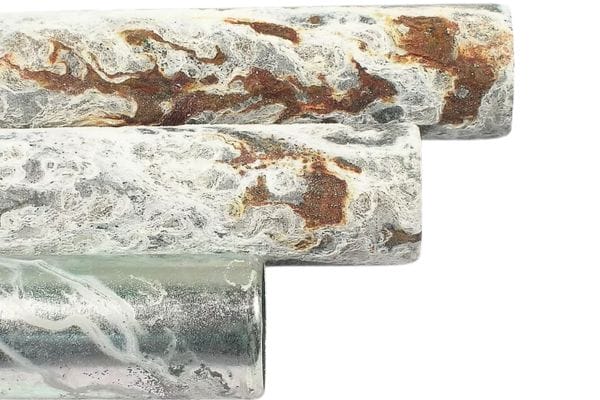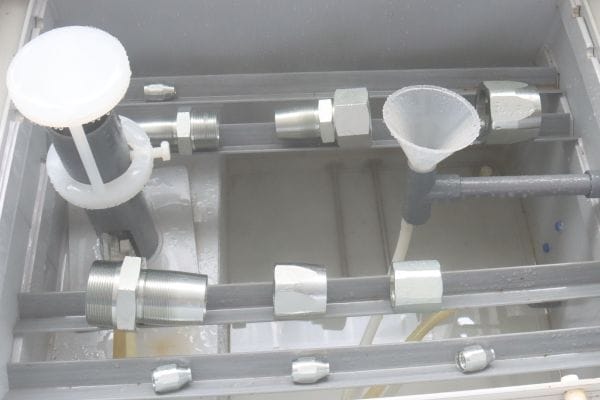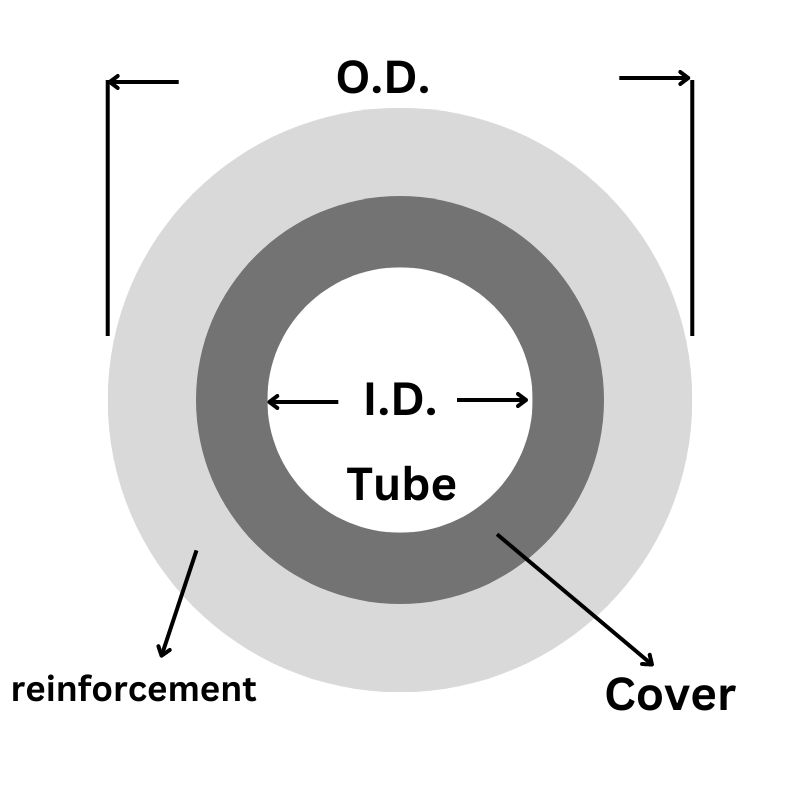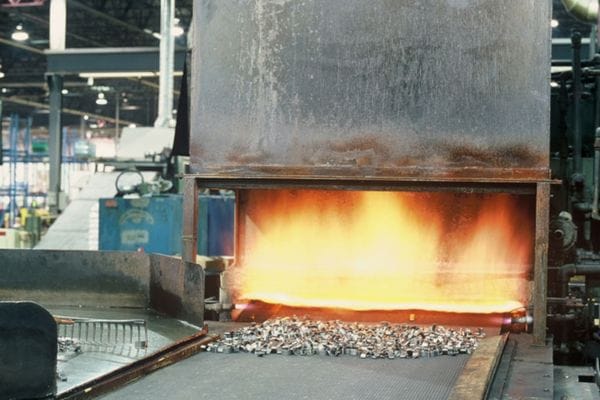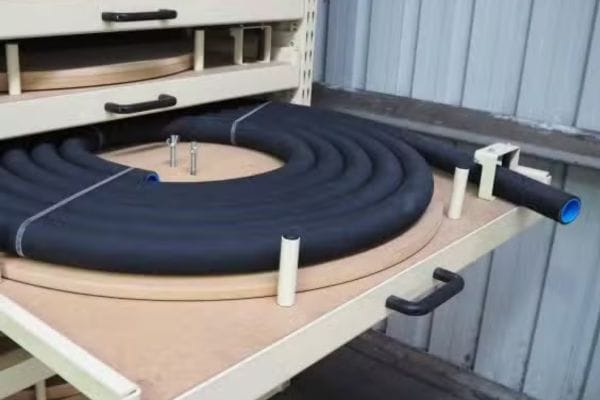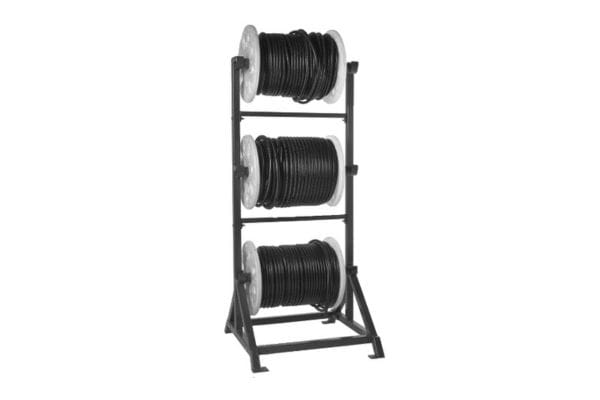While both NPT and NPTF fittings may look similar, their sealing mechanisms differ, which is why it’s important to know whether they can be used interchangeably. Using NPT in a system designed for NPTF, or vice versa, may result in improper sealing, leaks, or even thread damage.
Understanding NPT Fittings
When choosing the right fittings for your plumbing, hydraulic, or industrial systems, understanding the design and functionality of NPT (National Pipe Tapered) threads is essential. NPT fittings are among the most commonly used threaded connections, but their specific design is what makes them unique and reliable in a wide range of applications.
What is NPT (National Pipe Tapered) Threading?
NPT refers to a standardized type of pipe thread used for creating tight, leak-proof seals in piping systems. The “tapered” design of NPT threads means that the threads get progressively tighter as they are screwed together, creating a natural seal as the parts are tightened. The taper allows the threads to engage more tightly as the connection is made, which helps to prevent leaks under pressure. NPT threading is primarily used for pipes and fittings carrying gases, liquids, or other fluids, and is commonly found in both industrial and domestic plumbing systems.
NPT threads are defined by the American National Standards Institute (ANSI) and are widely adopted in the United States. The tapered nature of these threads ensures that a leak-resistant seal is formed without the need for additional sealing materials, although sealants like Teflon tape or pipe thread compound are commonly used to enhance the seal further.
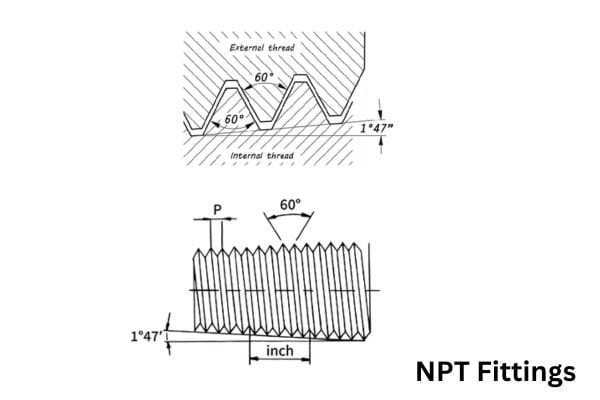
Key characteristics of NPT threads
- Tapered Design: NPT threads are tapered, meaning they gradually decrease in diameter along the length of the thread. This unique feature ensures that as the threads are tightened, they compress against each other, forming a tight, leak-proof seal.
- Standardized Angles: NPT threads feature a 60-degree thread angle. This standardized angle ensures that the fittings align properly, which helps to ensure a secure and leak-resistant connection when installed correctly.
- Male and Female Thread Compatibility: NPT fittings consist of male (external) and female (internal) threads. When the two are screwed together, the tapered threads fit snugly, creating the desired seal. Male NPT fittings typically have the external tapered threads, while female NPT fittings have the corresponding internal tapered threads.
- Self-Sealing: One of the primary benefits of NPT fittings is their self-sealing feature. As the male and female threads are tightened, the tapered design creates a seal between the two parts without the need for additional sealing compounds. However, to increase the sealing effectiveness, many people choose to use Teflon tape or pipe thread sealants.
- Pressure Resistance: NPT fittings are designed to handle moderate to high-pressure applications. The tapered thread design helps ensure that the seal remains intact even under pressure, making them suitable for a wide range of fluid and gas systems.
- Non-Interchangeability: Although NPT threads are widely used, they are not interchangeable with other thread types, such as BSPT (British Standard Pipe Tapered) or NPTF. It’s important to use the correct NPT fittings that match your system’s requirements to avoid leaks and damage.
What is NPTF (National Pipe Tapered Fuel) Threading?
While NPT (National Pipe Tapered) threads are commonly used for a variety of piping applications, NPTF (National Pipe Tapered Fuel) threads are a specialized variation designed specifically for fuel and fluid systems. Understanding the differences between NPT and NPTF, as well as the unique purpose of NPTF threads, is crucial for selecting the correct fittings for your system—particularly when dealing with high-pressure or fluid transfer systems.
How NPTF Differs From NPT
Although NPT and NPTF may seem similar, the key difference lies in how the threads are designed to seal. Here’s how they differ:
Sealing Mechanism:
- NPT Threads: The sealing in NPT threads is primarily achieved through the tapered fit between the male and female threads. As the connection is tightened, the tapered threads compress, creating a seal. However, this is not always completely leak-proof, especially under higher pressures or in systems where precision sealing is critical.
- NPTF Threads: NPTF threads are designed to create a metal-to-metal seal. Unlike NPT threads, which rely more heavily on the compression of the threads for sealing, NPTF threads have a slight “crest-to-crest” design, meaning the threads are intentionally shaped to meet precisely at their peaks. This results in a more effective seal, especially in fuel and fluid systems, where leakage is unacceptable.
Thread Design:
NPT threads are cut with sharp edges, which allow them to engage tightly with the corresponding threads of a fitting.
NPTF threads, however, are designed with flatter edges to ensure that the threads fully engage and form a solid seal when tightened, making them more effective for preventing leaks in high-pressure and high-risk applications.
Leak Prevention: NPT fittings are more prone to minor leaks, and often require sealants (like Teflon tape or pipe compound) to ensure a leak-proof connection. On the other hand, NPTF threads are designed to seal on their own, reducing the need for extra sealants in certain applications, making them more reliable in fuel and fluid systems.
The Design and Purpose of NPTF Threads
NPTF threads were specifically developed for systems that require a more secure, leak-resistant seal, such as those found in fuel, gas, and fluid handling applications. The primary purpose of NPTF threads is to:
- Prevent Leaks in Sensitive Systems: NPTF threads are designed to handle the rigorous demands of fuel systems, where even a small leak can lead to catastrophic consequences, such as fuel wastage, contamination, or fire hazards. These fittings are ideal for applications where tight sealing is paramount.
- Ensure Metal-to-Metal Contact: The unique design of NPTF threads allows for metal-to-metal sealing, which is a more secure and durable option compared to NPT threads that rely on softer materials (like thread sealants) to form a seal. This makes NPTF fittings more reliable under high-pressure and high-temperature conditions.
- Durability in High-Pressure Environments: NPTF threads are often used in hydraulic systems and high-pressure fuel lines, where consistent and long-term reliability is crucial. The tighter fit of the threads creates a stronger connection that can withstand the stresses of pressurized fluid systems.

Why NPTF is specifically designed for fuel and fluid systems
NPTF threading is particularly suited for fuel and fluid systems for several reasons:
- Safety: Fuel and fluid systems need to be absolutely leak-free to prevent hazardous situations. The metal-to-metal seal provided by NPTF threads significantly reduces the risk of leaks in systems handling fuel, oil, or chemicals, making them essential in industries like automotive, oil & gas, and manufacturing.
- Compatibility with Fuel Systems: NPTF threads have been specifically engineered to meet the stringent requirements of fuel lines, where leaks can lead to fuel loss or contamination. This makes them more suitable than NPT for applications involving gasoline, diesel, and other petroleum products.
- High-Pressure Performance: NPTF threads perform better than NPT threads in high-pressure environments, such as hydraulic systems or systems that transport high-viscosity fluids. The tighter seal ensures that even under extreme pressure, the connection remains secure and leak-free.
- Resilience to Environmental Factors: NPTF fittings are designed to withstand environmental stresses such as temperature fluctuations, vibrations, and corrosive substances, making them ideal for fuel systems that are exposed to various harsh conditions.
Are NPT and NPTF Interchangeable?
While NPT and NPTF fittings may appear similar at first glance due to their shared tapered design, they are not fully interchangeable. The differences in their thread design, sealing capabilities, and intended applications make it essential to understand when and why to use each type of fitting.
Why NPT and NPTF threads are not fully interchangeable
Thread Geometry and Fit: The key difference between NPT and NPTF lies in the design of the threads. While both use a tapered thread (meaning the diameter decreases as the threads move down the fitting), NPTF threads are specifically designed with flatter thread peaks that allow for a metal-to-metal seal, unlike NPT threads which rely more on compression and the use of sealing compounds to create a reliable seal.
NPT threads rely on the seal created by the tight fit of the threads. When tightened, they create a slight gap that is usually sealed by sealants, such as Teflon tape or pipe thread compound.
NPTF threads, however, have a more precise thread design that enables metal-to-metal contact, providing a more reliable seal without the need for additional sealing materials.
The flatter edges of NPTF threads and their tighter engagement make them more effective at creating a leak-proof seal under pressure, making them unsuitable for use in systems that rely on NPT’s thread sealant mechanism.
Sealant Dependency: While NPT fittings often require sealants (like Teflon tape, thread compound, or joint sealant) to achieve a leak-proof connection, NPTF fittings are designed to create a metal-to-metal seal. This difference in sealing mechanisms means that NPTF threads provide a stronger seal without the need for extra sealing compounds, which is crucial in systems that cannot afford even the smallest leaks.
If you use NPTF threads where sealants are necessary (like in NPT applications), the sealant could interfere with the fit, preventing proper metal-to-metal engagement. On the other hand, using NPT fittings without a sealing compound in applications that require NPTF threads can result in leaks, even under moderate pressure.

The impact of thread design on fitment and sealing
Fitment:
The threads of NPT and NPTF fittings are designed to engage differently. NPT fittings may fit together, but the seal isn’t as tight and often requires an extra layer of sealing material to ensure it doesn’t leak. NPTF fittings, on the other hand, are designed to create a precise fit that engages metal to metal, providing a more secure seal.
NPT threads are slightly more forgiving with fitment because they rely on compression and sealing compounds.
NPTF threads have a more precise tolerance, and improper fitment may cause damage to the threads or prevent a proper seal. If the thread fit is slightly off, NPTF fittings will not achieve their intended sealing performance.
Sealing:
NPT fittings rely on tighter thread engagement and often rely on sealants to prevent leaks.
NPTF fittings are engineered to provide a metal-to-metal seal, which is ideal for systems that need to prevent leakage under high pressure or where sealants would not perform well (such as in fuel lines or hydraulic systems).
This difference means that using NPTF fittings in a situation where NPT fittings are expected can lead to excessive wear or thread damage, as they will not form the same seal without sealants.
NPT vs. NPTF Interchangeability Issues: The Risks of Choosing the Wrong Thread
In industrial piping, hydraulic systems, and fluid transfer applications, NPT (National Pipe Tapered) and NPTF (National Pipe Tapered Fuel) are two commonly used thread standards. Although they may appear similar and can sometimes be forced to connect, their design principles and sealing mechanisms differ fundamentally. Incorrectly interchanging these two thread types can lead to serious issues, from reduced performance to catastrophic failure.
Fundamental Differences in Sealing Mechanism
To understand the risks of interchangeability, it’s essential to first recognize how NPT and NPTF threads seal differently:
- NPT threads rely on a tapered design and the use of sealants (such as PTFE tape or pipe dope) to create a seal. When tightened, the tapered design compresses the threads, but small gaps still remain and must be filled with sealant to prevent leakage.
- NPTF threads are designed for a precise “dry seal” using direct metal-to-metal contact. This is achieved through intentional thread crest and root deformation during tightening. NPTF threads have flatter crests, which form a tighter seal when engaged—without the need for additional sealants.
This difference in design philosophy is the root cause of problems when these thread types are mixed.
Risks of Using NPT Threads in an NPTF System
Using NPT threads in a system designed for NPTF threads can lead to several problems:
System Leakage
The most obvious and common issue is leakage. NPTF systems rely on a metal-to-metal seal that NPT threads cannot provide. Even with sealant, NPT threads may fail to maintain a proper seal under high pressure or vibration, causing fluid or gas leaks.
In fuel systems, such leaks can lead to reduced efficiency, fire hazards, or even explosions. In hydraulic systems, leaks may cause pressure instability, degraded performance, or mechanical failure.
Sealant Contamination
Using sealant with NPT threads in an NPTF system can result in excess sealant entering the internal flow path. Sealant debris may contaminate the fluid, clog precision valves, filters, or orifices, and reduce overall system performance or damage components.
In high-precision hydraulic or fuel injection systems, even small contamination can cause serious problems—such as injector clogs or servo valve failures.
Reduced Pressure Tolerance
NPTF systems are often designed for high-pressure applications. NPT threads may not provide the mechanical strength or sealing integrity needed under such conditions. In extreme cases, the connection can fail—causing sudden leakage or even thread rupture, posing safety risks.
Risks of Using NPTF Threads in an NPT System
Conversely, installing NPTF threads into a system designed for NPT threads also comes with risks:
Thread Damage
NPTF threads are more precise and have flatter crests. Forcing them into NPT ports can deform or damage the threads. This damage may not be immediately visible but can reduce the long-term integrity of the connection and create issues during future maintenance or disassembly.
Over-Tightening
Since NPTF relies on a metal-to-metal seal, technicians may habitually tighten them more firmly. Applying this same habit to NPT systems can result in over-tightening, which may crack or deform components—especially when brass or plastic fittings are involved.
Maintenance Challenges
Mixing NPT and NPTF threads complicates system maintenance. Technicians may have difficulty identifying the thread type during service, leading to incorrect replacements or repair techniques that further worsen system performance or reliability.
NPT vs BSPT vs NPTF: Thread Compatibility Comparison
When it comes to threaded pipe fittings, understanding the differences between NPT (National Pipe Tapered), BSPT (British Standard Pipe Tapered), and NPTF (National Pipe Tapered Fuel) threads is essential for ensuring proper compatibility, sealing, and system performance. Each thread type has its unique design and application, and choosing the right one is crucial for leak prevention and system integrity.
NPT vs BSPT: What’s the difference and why it matters?
Thread Design and Tapering:
NPT threads are designed with a 60-degree tapered angle, commonly used in the United States for plumbing, gas, and fluid systems. NPT threads are designed to seal by compression between the tapered threads and often require a sealant to ensure a leak-free connection.
BSPT threads, on the other hand, are primarily used in the UK and other regions that follow British standards. BSPT threads also have a tapered design, but their thread angle is 55 degrees instead of 60 degrees, which is slightly different from NPT threads. This difference in angles can lead to incompatibility between NPT and BSPT fittings, making it difficult to achieve a proper seal if paired incorrectly.
Thread Fit and Compatibility: While both NPT and BSPT threads are tapered, their thread profiles are different enough that they should not be mixed. NPT fittings will not fit properly with BSPT fittings, and attempting to connect them can result in leaks or failure to seal.
NPT threads tend to have rounder peaks and valleys, while BSPT threads have flatter peaks and are generally more shallow. This difference in shape means that the threads will not fully engage, even if the fittings are the same size, leading to leakage.
Why It Matters:
Choosing the wrong type of fitting, whether NPT or BSPT, can cause system failure. Incompatible threads can result in ineffective sealing, leading to fluid or gas leaks, pressure drops, and potential damage to your system.
In some cases, sealants may not be enough to compensate for the fundamental incompatibility between NPT and BSPT threads.

Comparing NPT, NPTF, and BSPT
NPT (National Pipe Tapered) Fittings:
Applications: NPT fittings are commonly used in the United States for general plumbing, gas, and hydraulic systems. They are suitable for a wide range of applications, including residential plumbing, water systems, and industrial machinery.
When to Use: Use NPT fittings when working with low- to medium-pressure systems that require a standard, cost-effective solution. If you’re working with gas lines, water pipelines, or air systems, NPT fittings are a good choice. They rely on sealants (like PTFE tape or pipe joint compound) for leak prevention.
NPTF (National Pipe Tapered Fuel) Fittings:
Applications: NPTF fittings are designed for fuel, gas, and high-pressure fluid systems where a tight, metal-to-metal seal is needed to prevent leaks. They are commonly used in fuel systems, hydraulic lines, and systems where safety and pressure resistance are crucial.
When to Use: Choose NPTF fittings in applications where high-pressure resistance and leak-proof performance are essential, such as in fuel systems, automotive applications, and high-pressure hydraulic systems. NPTF fittings are preferred in situations where metal-to-metal sealing is critical, providing a more secure seal than NPT.
BSPT (British Standard Pipe Tapered) Fittings:
Applications: BSPT fittings are widely used in countries that follow the British standard, including the UK, Australia, and parts of Asia. They are commonly used in gas lines, steam systems, and oil pipelines.
When to Use: Use BSPT fittings when working in regions that use the British standard for pipe threading. BSPT threads are often used in high-pressure and fluid transfer systems like steam or oil pipelines, where precise sealing is required. Since BSPT threads are different from NPT, it is important to use fittings that are compatible with BSPT threads to ensure proper sealing and avoid leaks.
Understanding international thread standards and their compatibility
Thread Standards Around the World:
Different regions and countries have their own standards for threaded pipe fittings, which can lead to confusion when working with international systems. NPT is the standard in the United States, while BSPT is the standard in the UK and many other Commonwealth countries.
ISO standards and other international thread standards (such as metric threads) may also come into play, especially in European and Asian markets.
Compatibility Issues:
The key issue with international thread compatibility lies in the different thread angles and profiles used by different standards. As mentioned earlier, NPT threads have a 60-degree angle, while BSPT threads have a 55-degree angle. Even slight variations in thread angles and shapes can make it difficult for fittings to engage properly, leading to leaks and system failures.
It’s crucial to understand these international standards and choose fittings that match the requirements of your system. Using NPT fittings in a BSPT system, or vice versa can create compatibility problems and compromise system safety and performance.
Adaptors and Converters:
To address compatibility issues, thread adaptors or converters are available that allow the connection of NPT fittings with BSPT fittings. However, using adapters should only be done when necessary, as they can introduce additional complexity and potential leak points into the system. It is always best to use the same type of fitting whenever possible.
How to select the right thread type for your application
Consider the System’s Location and Standard: The first step in selecting the right thread type is determining whether you are working within a regional standard (NPT, BSPT) or a specific application (fuel, gas, fluid systems). Consider whether your system is in the United States (where NPT is standard) or in Europe, Asia, or Australia (where BSPT or other standards might apply).
Determine Pressure and Fluid Requirements: Consider the pressure levels and types of fluids that will be handled by your system. For high-pressure systems, or those dealing with gas, fuel, or hydraulic fluids, NPTF fittings are often the best choice due to their metal-to-metal seal and better sealing capacity. On the other hand, NPT fittings may be suitable for lower-pressure applications with general fluids like water or air.
Understand the Materials and Corrosive Factors: Select fittings based on the material compatibility (e.g., stainless steel, brass, carbon steel) and potential chemical exposure. NPT, NPTF, and BSPT fittings can come in a variety of materials, and each material will have different resistance to corrosion, wear, and environmental factors.
Matching Thread Types: The most important consideration when selecting a thread type is ensuring that all components within the system use the same standard. If you’re unsure, consult technical manuals or seek professional advice to avoid costly mistakes.
Application Guide: Choosing the Right Thread Type
Industry Applications and Thread Selection
Oil and Gas Industry
In the oil and gas sector, systems often operate under high pressure, making NPTF threads the preferred choice. NPTF offers a metal-to-metal sealing mechanism that ensures a more reliable seal, effectively preventing leaks under harsh conditions. This is especially valuable in offshore drilling platforms and high-pressure transmission lines.
Automotive Industry
The automotive sector has strict requirements for threaded connections, particularly in fuel and hydraulic systems. NPTF threads are widely used due to their leak-proof performance, which is essential for vehicle safety and environmental compliance. Modern fuel systems must withstand vibrations, temperature changes, and long-term use, making NPTF’s metal-to-metal seal ideal.
General Manufacturing
In general manufacturing, NPT threads are commonly used due to their cost-effectiveness. Most factory air, water, and low-pressure fluid systems utilize NPT connections with proper sealant to deliver adequate performance. NPT’s wide availability is another advantage, with fittings offered in various sizes and materials by most suppliers.
Construction and HVAC Systems
NPT threads are the standard choice in construction and HVAC (heating, ventilation, and air conditioning) systems. These systems usually operate at lower pressures, and NPT threads with proper sealant offer reliable connections. The widespread use of NPT in the construction industry also ensures easy access to fittings and tools, reducing installation and maintenance costs.

Thread Selection by Pressure Rating
Low-Pressure Applications
In low-pressure systems like water lines, low-pressure air systems, and drainage, NPT threads are often the most cost-effective option. These pressures don’t pose a major challenge to connections, and NPT threads with sealant can provide adequate sealing.
Leaks in low-pressure systems typically have minor consequences, which supports the use of budget-friendly NPT threads. However, proper installation and sealant use are still necessary to avoid unnecessary maintenance.
Medium-Pressure Applications
Medium-pressure systems—such as general hydraulics and compressed air—can use either NPT or NPTF threads, depending on system criticality and leak tolerance. NPTF offers greater sealing reliability for critical systems, while NPT with high-quality sealant works well in less critical cases.
These systems are common in industrial and commercial environments, so proper thread selection at this pressure range is particularly important for engineers and technicians.
High-Pressure Applications
High-pressure systems—like hydraulic circuits and fuel injection—almost always require NPTF threads. At these pressures, even the best sealants may not guarantee a reliable seal with NPT threads. NPTF’s metal-to-metal seal performs better under pressure and prevents leaks and system failures.
Leaks in high-pressure systems can lower efficiency and pose safety risks, so investing in high-quality NPTF fittings is a smart choice.
Thread Selection by Fluid Type
Water and Water-Based Fluids
NPT threads are often the most cost-effective option for water and water-based fluid systems. Leakage risks are lower, and NPT connections with the right sealant perform well.
For wet environments, sealants must be compatible with water and meet potable water safety standards if necessary. Some water treatment chemicals can affect sealant performance, so the entire system’s chemical profile should be considered when selecting sealants.
Oil and Lubricants
Oil and lubrication systems can use either NPT or NPTF threads, depending on pressure and leakage tolerance. High-pressure hydraulic systems benefit from NPTF, while NPT is suitable for low-pressure lubrication systems.
Sealants must be compatible with oils. Some sealants degrade over time when exposed to oils, leading to seal failure. Choose sealants specifically designed for oil systems.
Gas Systems
Gases leak more easily than liquids, so gas systems need superior sealing. NPTF threads perform well in gas applications, especially under high pressure or with hazardous gases.
Sealants used in gas systems should be designed specifically for gas. These products offer better-gap-filling properties to block even microscopic leakage paths.
Corrosive Chemicals
Systems handling corrosive chemicals demand high sealing reliability, as leaks can cause safety and environmental issues. NPTF threads offer better sealing and are ideal for such applications.
Materials must also be compatible with the chemicals in use. Stainless steel, Teflon-coated parts, or specialty alloys may be required depending on the chemical nature and concentration.
Conclusion
In summary, understanding the differences between NPT and NPTF fittings is essential for ensuring a secure, leak-free connection in your piping or hydraulic system. While both NPT and NPTF fittings are tapered threads designed for sealing, they are not interchangeable due to differences in thread design and the sealing mechanism.
FAQ
What’s the difference between NPT and NPTF threads?
NPT threads rely on compression and sealants (like PTFE tape) to create a leak-proof seal, while NPTF threads form a metal-to-metal seal without the need for extra sealants, making them ideal for high-pressure and fuel systems.
Are NPT and NPTF fittings interchangeable?
No, NPT and NPTF fittings are not interchangeable. The thread profiles are different, and using the wrong type of fitting can lead to leaks, thread damage, or system failure.
Can I use PTFE tape with NPTF fittings?
While NPTF fittings typically don’t require sealants, you can use PTFE tape or thread sealants for extra protection, especially in high-pressure applications or when additional security is needed.
When should I use NPT vs NPTF fittings?
Use NPT fittings for general plumbing, water, and gas systems with moderate pressure. Choose NPTF fittings for high-pressure systems, fuel lines, or situations where a metal-to-metal seal is essential for preventing leaks.
Do NPT and BSPT fittings work together?
No, NPT and BSPT threads are not compatible. They have different thread angles (60° for NPT vs. 55° for BSPT), which can cause sealing issues if used together.
How do I choose the right thread type for my system?
To select the correct thread type, consider the application’s pressure requirements, fluid type, and whether you’re working in a region with NPT or BSPT standards. Always ensure the thread type is consistent throughout your system to avoid leaks and failures.




